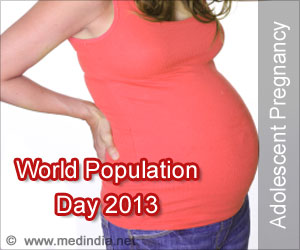When a Yugoslavian new-born was declared the 5 billionth human on July 11, 1987,the governing council of the United Nations Development Programme (UNDP) established a “World Population Day” with the aim of focusing attention on the urgent and sensitive issue of world population.
A huge population has deep links to poverty, hunger, homelessness, a lack of affordable and accessible healthcare, education and other resources, and an overall dip in human well-being. In a country like India with a total population exceeding 1.2 billion, we are unable to provide basics like food, shelter, healthcare and education for all. Increasing numbers make it impossible to establish social security measures.World Population Day is especially significant for developing countries to deal with increasing population numbers and ensure health for total populations.
World Population Day and UNFPA
The key UN agency focusing on issues regarding population is the UNFPA (United Nations Population Fund).The UNFPA focuses on a cluster of themes under its “population matters” programme. These themes are:
- Aging: According to UNFPA statistics, people older than 60 make up 11% of the world’s total population. Ageing brings with it a set of challenges in terms of health and personal independence. UNFPA works on raising awareness about an ageing global population. It also provides data and information support towards public policies addressing the issue of ageing.
- Census: UNFPA focuses on supporting countries conduct regular census to record key data like number of persons per sq km, housing numbers and other statistical information. UNFPA sometimes provides financial as well as technical support to ensure that census data is generated for development.
- Climate Change: UNFPA closely works with local governments to understand how population dynamics affects climate. Climate change impacts all populations but it is the vulnerable population of the poor and homeless who are most likely to be impacted the worst. UNFPA works towards addressing present and future needs.
- Demographic Dividend: A “demographic dividend” refers to a boost in economic productivity when there are large numbers in the workforce age group. UNFPA works with local governments, partners and civil society to support policies that encourage demographic dividends in the population.
- Migration: UNFPA works towards understanding migration patterns and collecting information for better migration data. UNFPA also advocates for the concerns of vulnerable migrants like women and displaced people.
- Urbanization: Accelerated urbanization draws populations to its city centers. These migrations impact sexual and reproductive health and birth rates. UNFPA works with governments towards sustainability of urban populations. UNFPA also works to ensure population services like HIV counseling, testing, access to birth control measures and reproductive services.
- Population trends: UNFPA works with local governments and partners to identify population trends like changing fertility rates, migration patterns and accelerated urbanization. UNFPA works with countries to put public policies in place, which encourage sustainable development in population matters like safe pregnancies and safe births.
Objectives of World Population Day
The main objective of World Population Day is to increase awareness and knowledge among communities on the issue of population. Some of the other objectives include:- Empowering the youth of the nation to exercise their rights and choice in marriage and pregnancy.
- Education on sexual and reproductive health.
- Education on safe birth control measures.
- Education on safe sex and risks of STDs (sexual transmitted diseases).
- Education of women on safe pregnancies.
- Awareness of women’s rights.
- Ensure access to reproductive services for all.
Significance of World Population Day
The burgeoning world population and its attendant issues is a challenge to global development.
According to recent UN statistics, the world population reached 7 billion on October 31, 2011. Estimates peg the world population at 8 billion by 2024. The current rate of growth of the world population is 1.14% per year. Population is growing rapidly in developing countries and India is expected to overtake China’s population by 2030.
Significantly, marking World Population Day brings these issues to light and draws the attention of governments, NGO partners and communities to act on important issues. It is important for every country to regulate numbers, maintain a healthy sex ratio, ensure reproductive health and provide for maternal and child health and advocate for freedom of choice in family planning. These issues and concerns have to be addressed to ensure a healthy and stable population that contributes to overall development of the nation.
At the Millennium Development Goals Summit in 2000, global leaders agreed on a common goal of achieving universal access to reproductive health by 2015, enhancing gender equality and ending discrimination against women. On World Population Day 2015, it is time to reflect and hold our leaders accountable on these goals.
Source-Medindia









